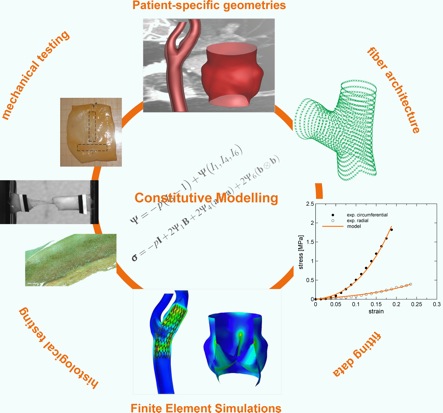Constitutive modeling of soft biological tissues
Constitutive modeling of soft biological tissues is a very active field of research continuously increasing in the biomechanics area, and this is particularly the case for arterial wall tissue. In fact, on one hand, the knowledge of arterial mechanical properties can provide helpful information to predict the onset and the progression of atherosclerotic lesions, the rupture of aneurysm as well as to design artificial vascular grafts. On the other hand, such a knowledge is essential to study and to optimize the performance of minimally-invasive interventions (balloon angioplasty or stenting) through finite element simulations.
An adequate description of the mechanical behavior of soft biological tissues requires: (i) a constitutive model able to take into account histological and mechanical evidences; (ii) experimental data from in-vitro mechanical tests (uniaxial and biaxial tensile tests, extension/inflation test) and/or in-vivo measurements of inner diameter and of blood pressure; (iii) identification of material parameters via fitting procedures.


